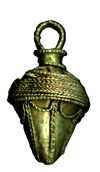The adze-heads from Plemięta, Grudziądz district (Poland): Alpine jades, Armorican products and very long-distance exchanges
DOI:
https://doi.org/10.23858/SA68.2016.003Keywords:
Plemięta, Chełmno county, Alpine jades, Bégude type adze-head, the Funnel Beaker cultureAbstract
Discovered in the 19th century, the hoard from Plemięta (Chełmno county, Poland) consisted of three polished adze-heads, of which two are in the Museum in Grudziądz. Until now, this hoard had been assumed to be linked to Danubian farming communities. A petrographic approach coupled with an in-depth, Europe-wide typological study allows us to rethink this cultural attribution. In fact, the Plemięta adze-heads had very probably been made in the Armorican massif (France), produced by specialists directly influenced by the standards of the earliest adze-heads of Alpine jades from Mont Viso in the Italian Alps. This proposition, which is supported by other examples of adze- and axeheads that had probably been imported into southern Scandinavia from France, re-invigorates the hypothesis that there had been western European
influences on communities of the Eastern TRB Group, pertaining to the circulation of ‘object-signs’ and
ideas over distances exceeding 1500 km as the crow flies.
Key words: Plemięta, Chełmno county, Alpine jades, Bégude type adze-head, the Funnel Beaker culture.














